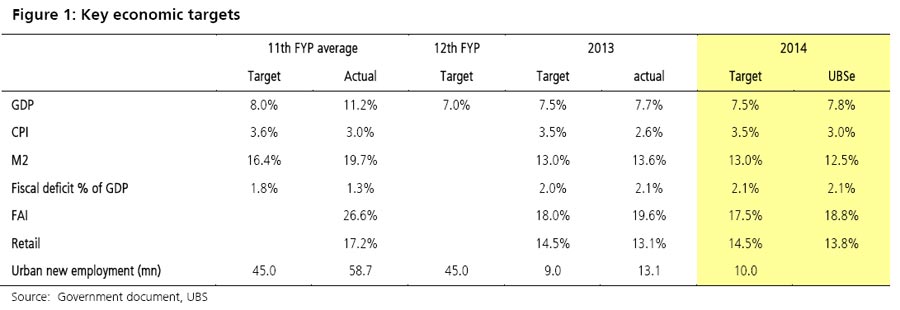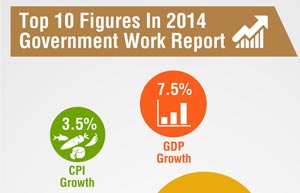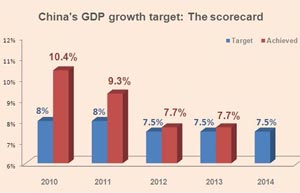Growth is still a high priority
The Chinese government is aiming for both a relatively rapid GDP growth and meaningful progress in reforms. Despite declaring a "war on pollution" and plans to roll out a number of reforms, the government has again set a 7.5 percent GDP growth target for 2014, with the aim of supporting employment growth and market confidence. While stronger growth in major developed markets this year should help China's exports, such a high growth target suggests that the government plans to proceed only gradually in pushing forth structural adjustments and controlling local government debt.
Macro policies to stay neutral
The government set a slightly higher budget deficit and kept M2 growth target unchanged (13 percent) for 2014. The latter suggests that overall credit growth may not slow by as much as we expect. Moreover, property tax will not be rolled out this year and there is no major change on property policies. The government meanwhile is maintaining its focus on the provision of more affordable housing, and is raising its target for social housing starts to seven million units.
Reform implementation gathers pace
As expected, relatively easier reforms, or those with the broadest consensus, will be pushed forth at a faster pace in the near term. Such reforms include the relaxation of government administrative approvals, expanding social safety net coverage, expansion of existing tax and factor price reforms, and financial sector reforms. Establishing a deposit insurance system this year may indicate a quicker pace of interest rate liberalization. Increased two-way volatility is also expected in the yuan exchange rate.
War on pollution and SOE reforms
More SOE divestment is expected as the government is planning to open more investment projects within SOE dominated sectors this year. The government has also announced plans to start a "war on pollution" from multiple fronts, including implementing tougher measures to retire polluting capacities, cleaning up coal-fired power plants, pushing through stricter oil product standards, toughening building standards, and imposing energy and utility price increases.
Growth is still important - Key economic targets
The key economic objectives outlined in Premier Li's government report are broadly in line with last year's target and with expectations (Figure 1). By setting the GDP growth target again at 7.5 percent, and at a level higher than in the current five-year plan, it is clear that the government still puts growth at a high priority. This is despite its declarations of a "war on pollution", plans to control local government debt and plans to adjust China's economic structure. Premier Li explained in his report that the growth target was set to ensure sufficient job creation (necessary for the transfer of China's rural labor force to continue) and to help anchor market confidence. Nonetheless, given the recent changes reportedly made to the performance metrics by which local officials are evaluated, the importance of growth targets will be somewhat reduced at local government levels, compared to years past. For example, the majority of local governments have already this year adjusted their 2014 growth targets downwards; even if almost all remain at levels above the national target.

|
 |
 |